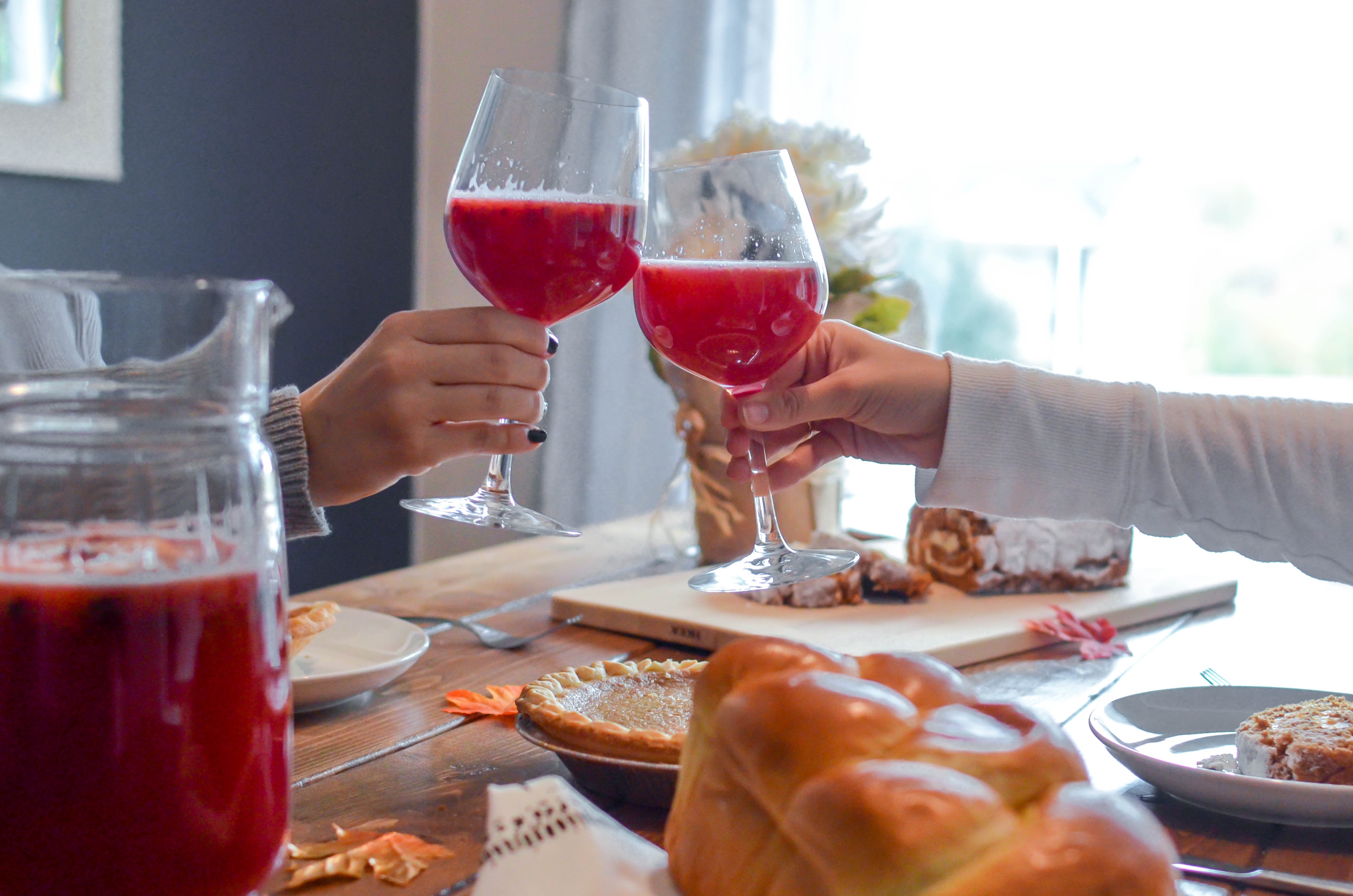
My German Thanksgiving
by Kristin Fehlauer
An underappreciated holiday
Thanksgiving is a special American holiday. It marks a nice long weekend off of work, delivers one of the craziest travel days of the year, and for many it signals the start of the beloved holiday season. It is one that almost all Americans celebrate, regardless of creed, class, or color. And for many, in addition to food, football, and feeling thankful, Thanksgiving is about family.
I definitely took this holiday for granted growing up. It was simply the way of things, part of the seemingly endless march of the calendar year. When I was younger, Thanksgiving was a no-brainer; my plans were my parents’ plans. High school introduced a bit more variety by offering the option to go to the high school homecoming game (football) between the two hometown rivals. And then during my college years and my first “real” job, I lived close enough that I had a ready answer to the common question “So what are you doing for Thanksgiving?” I’ll be at home with the family, where else?

A Thanksgiving ambassador
Fast forward to 2002. My first time living abroad, I was working as an English teaching assistant in an elementary school in the port city of Rostock, Germany. Besides serving as a real-life provider of audio examples, I was also called upon to share cultural information and talk about my experiences as an American. My supervisor asked if I would do a brief presentation on Thanksgiving near the end of November. Sure! I’d love to share this special American holiday with the kids!
I planned out what I would say, trying to think of what would grab their interest. Visuals; visuals are always good. Fortunately my mother, the Care Package Queen, had made sure I was well stocked with a couple cans of Libby’s® pumpkin pie filling. OK, I can pass that around. Some sort of arts and crafts activity would be good, too. I’ve got it – the hand turkey!
Don’t know what a hand turkey is? Ask your nearest American. You put your hand palm-down on a piece of paper, fingers splayed. Trace from your wrist all the way around the thumb and fingers and back down to your wrist. Lift your hand, then draw a curve across the wrist to connect the two ends of the outline. Decorate the thumb shape like a turkey’s head, and color in the remaining four fingers in autumnal or turkey-like colors. Voilà, an artistic classic of freely interpreted misshapen poultry!
I arrived in the classroom of first graders full of confidence that I would open their eyes to a culturally interesting celebration from a strange land. They would be impressed and excited to learn about a foreign custom. They would be bound to have lots of questions, and clamor for tales of Thanksgivings past. They would be thrilled to make their own hand turkeys, which they would proudly bring home and insist on having their parents display it. Right?

A turkey out of water
Not exactly. They listened politely enough, as least for a while, but I probably should’ve actually baked a pumpkin pie instead of just passing around the can. The hand turkey kept them occupied a few minutes longer, but I’m sure most of them wound up in the recycling bin. And things really fell apart when I attempted to explain that “Thanksgiving” is a time for “giving thanks.” It’s typical for people at a Thanksgiving dinner to go around and say what they’re thankful for. I asked if anyone wanted to complete the sentence “I’m thankful for…” This experiment rapidly degenerated into statements like “I’m thankful that Santa Claus will be bringing me lots of candy!” (The next big holiday on their calendar was Christmas.) I had to try to clarify that “I’m thankful for” does not mean “I wish that”!
It was bizarre to be insisting to these children, “No, you don’t understand – this is a major holiday for us!” It just intensified my feelings of homesickness, which were bound to surge during a holiday anyway. I felt so removed. Isolated in a world bereft of this wonderful holiday – one that, having always taken it for granted, I suddenly realized I missed. Not just the food and the days off – I missed my family and the time we would spend together.
Despite this somewhat disappointing start, my first Thanksgiving abroad actually turned out rather nice. I got together with the other teaching assistants in my program, some American, some British, to celebrate. We made all the usual dishes, substituting and adapting where German grocery stores made it necessary. As most of the Americans were planning on doing something about the holiday for our classes, I asked the others what they were going to do or had done. Almost everyone said some sort of variation of the “hand turkey”! It’s such a little thing, but I hadn’t realized how universal this was for Americans. And this discovery of a shared experience renewed my feelings of connectedness and made me feel less lonely.
Something old, something new
Since then, I’ve had many Thanksgivings away from home. In fact, I haven’t been home for Thanksgiving with my family since 2004. But I have celebrated elsewhere in the States with other “Thanksgiving orphans,” and here in Munich with other expats, both American and non. I guess this is how customs from “the old country” are both preserved and adapted. We try to recreate fond memories of our homes, but have to be flexible about how we do so in a new context. But it’s not just about location; this adaptation process is something every generation does, really. Perhaps the phenomenon is a bit more noticeable when done outside the home country. I still miss my family on the last Thursday of every November, but sharing new experiences with others and starting new traditions makes it a lot easier.
If you’re an expat, how have you adapted or preserved traditions from your home country? If not an expat, how have you changed or adapted traditions you grew up with?


